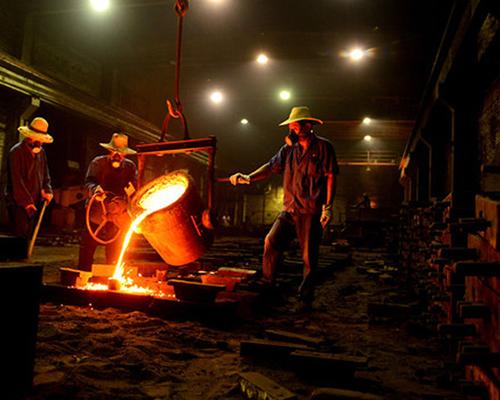Flux in aluminum recycling can be used in a variety of aluminum alloy melts, can be used for aluminum smelting, degassing and deslagging. It is only necessary to sprinkle the refining agent on the surface during use, and then the refining agent is quickly dissolved in the aluminum liquid and then thoroughly stirred. If a jet is used, it is better to use an inert gas to inject the refining agent, for example, nitrogen and argon can be selected.
Refining flux of required amount into refining tank and cover it properly, turn on the switch of refining tank and connect nitrogen gas. When Refining Agent is spraying out of refining iron tube, insert it into the furnace and move all around inside evenly for 2 or 3 times. When powder inside the tank is sprayed completely, first draw out the refining tube out of aluminium liquid, and then switch off nitrogen gas.
Flux in aluminum recycling mainly removes the hydrogen and floating oxidized slag inside the aluminum water and the high-temperature melt purification (refining) treatment of the aluminum alloy, and the basic function is to remove the internal inclusions and hydrogen in the high-temperature melt. This makes the aluminum liquid more pure and also has the effect of clearing the slag. Some members of the aluminum water refining agent are easy to decompose at high temperature, and the generated gas can react with hydrogen, and can strongly adsorb the slag and quickly escape from the melt to play a role in clearing the slag.

The Novelis factory was built in Latchfors Lockw in 1991 and is considered one of the world’s leading aluminum recyclers. They have the ability to recycle almost all aluminum cans sold in the UK, equivalent to approximately 117,000 tons per year.
HyNet decarbonization clusters are located in the Liverpool City area, Greater Manchester United Authority area and Wrexham, Cheshire, Warrington and Flint counties. HyNet will provide low-carbon hydrogen to promote heating for businesses and homes throughout the region. Starting in early 2025, this will be a good way to replace fossil fuels.
The use of low-carbon hydrogen technology will help reduce carbon dioxide emissions. It will also help the UK achieve a net-zero journey and produce low-carbon products, making it more suitable for businesses and their customers.

